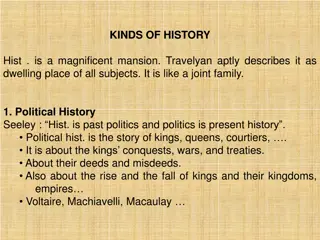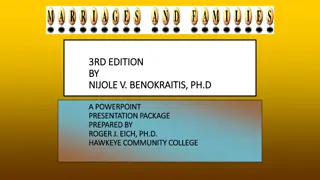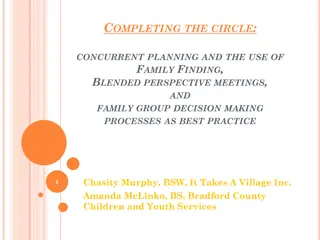Exploring Your Family History Through Research
Embark on a journey to uncover your family's past by creating a family tree. Start by gathering information from parents, grandparents, old photographs, original documents, and official records. Dive into archives, census data, and historical sources to trace your lineage and learn about your ancestors' lives. Uncover secrets, connections, and stories hidden within your family history.
Download Presentation

Please find below an Image/Link to download the presentation.
The content on the website is provided AS IS for your information and personal use only. It may not be sold, licensed, or shared on other websites without obtaining consent from the author.If you encounter any issues during the download, it is possible that the publisher has removed the file from their server.
You are allowed to download the files provided on this website for personal or commercial use, subject to the condition that they are used lawfully. All files are the property of their respective owners.
The content on the website is provided AS IS for your information and personal use only. It may not be sold, licensed, or shared on other websites without obtaining consent from the author.
E N D
Presentation Transcript
My family Have you ever wondered how big or how small your extended family is? How many cousins do you have? Which aunties or uncles are related to each other and which are not? What were your ancestors like?
My family tree Well, it may be possible to find out all the answers by making your very own family tree!
Research The first step is to do your research. You will need to take a lot of notes. Be sure to write down or record all of the information you gather.
Parents A good way to start is by asking your parents about their families. You can ask them questions about their childhood. Make separate lists for your mum and dad, so that the information does not get mixed up.
Grandparents Next, you can talk to your grandparents. They can give you information from before your parents were born. They can tell you a lot about their individual family members. Be sure that your notes include dates of birth, important family events and perhaps historical events at the time.
Old photographs The next step is to look at primary sources of evidence, including artefacts such as old photographs. You can find a wealth of information about your family from photograph albums.
Original documents Original documents include old diaries and letters. These primary sources can reveal a lot about the day-to- day lives of family members long ago. As long as they are not private, you might get to look at them!
Official documents Official documents such as birth and marriage certificates are interesting to explore. They include names, dates, occupations, addresses and other details about family heritage.
Census A census is an excellent primary source of information. The earliest surviving census of Ireland was taken in 1901. A census takes a snapshot of a country s population. You can use the censuses to trace your family tree over the past century!
Making your family tree You can make your family tree on chart paper or as a digital document. A digital document can easily be shared with others.
Making your family tree It would be nice if you could include a photograph of each family member. If you choose to make a digital document, you could scan the photographs.
Making your family tree First you must picture the shape of a tree, with a trunk that branches out as it moves up the page. You can find some free family-tree building programs available online. This is your family tree, so you should place yourself in the centre!
Adding brothers and sisters If you have any brothers and sisters, they should be placed on the same level as you on the tree.
Previous generations The generation before you are your parents. They should be placed on the level immediately above you on the tree. You father and his siblings should go on one side of the tree, and you mother and her siblings on the other. You could include your cousins on the same level as you.
Previous generations The generation before your parents are your grandparents. They are your ancestors! They should be placed on the level immediately above your parents on either side of the tree.
Family tree Researching and making your own family tree is a rewarding activity. Not only do you get to learn a lot, you can also share your findings with your family and show them how much you care.
Illustrations Shutterstock Beehive























